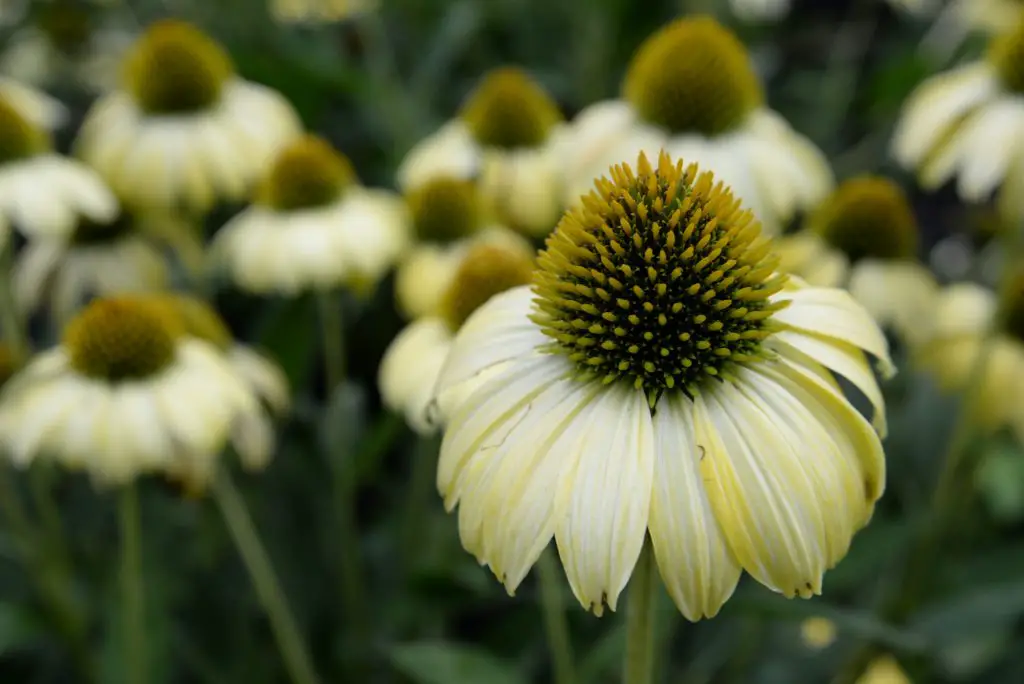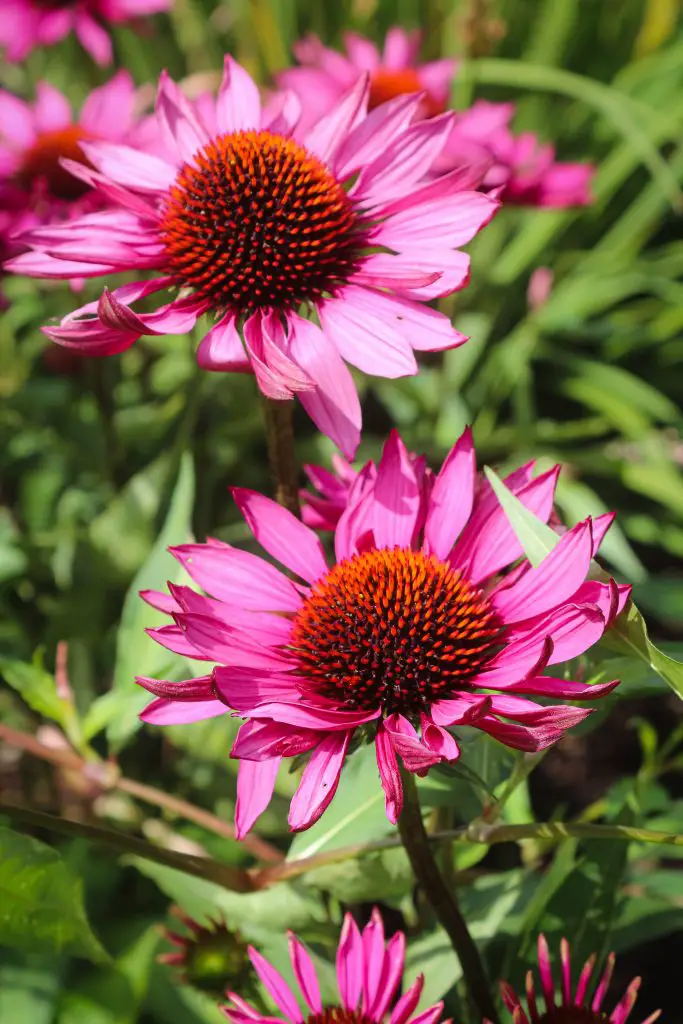Do Coneflowers Spread? Are They Invasive? Coneflowers are a popular cottage garden plant that is used widely around the world to add a splash of colour to the garden through the summer months. However, if you plant coneflowers will they spread in your garden, and are they invasive?
Coneflowers are plants that do self-seed readily and we’ll progressively spread within the garden if left unchecked, however, they are generally not considered invasive. This means that once you plant them in your garden you are likely to have them reappearing in your garden every single year unless you make a specific effort to eradicate them.

Are Coneflowers Considered Invasive?
Coneflowers are generally not considered invasive though they do produce many offspring due to their ability to reseed easily. However, because the plants is not terribly problematic to remove places like Cornell University refer to the plant as been non-invasive.
However, if you wish to controller plants some degree this can be done by simply deadheading the seed heads as they appear which will reduce the degree of self-seeding that does occur in the subsequent season.
How To Grow Coneflowers In Your Garden
Coneflowers, also known as echinacea, is an extremely easy plant to grow and requires very little maintenance throughout the summer. It produces flowers through the late summer until the first frost in autumn. During this period makes it an excellent cut flower with flowers lasting up to 2 weeks in a vase.
The plant itself is suitable for growing in Zone 3 until 10 and will perform well in full sun or light shade, however, as it is a very tough plant it does not need a particularly nutritious soil to thrive and can become extremely leggy if there are too many nutrients in the soil. It is also an extremely drought tolerance plant that is resistant to common pests such as deer making it an ideal plant for a low maintenance garden.

To grow coneflowers from seed is relatively easy as they germinate readily in a range of conditions and the seeds do benefit from being exposed to a period of cold as they are native to North America where cool temperatures are frequent.
The seeds can be scattered onto your garden beds in the late fall or many garden is also directly sow them in early spring or even sow them in a tray indoors approximately 6 to 8 weeks prior to the last frost in spring.
To start the seeds off in a seed start by filling it with a good quality seed raising mixture. Then sprinkle the seeds onto the surface of the seed tray but do not bury them as they are a seed that requires sunlight to germinate successfully. When sowing them in the tray it is best to place them in rows as that will make them easier to transplant later on.
Once the seeds have been planted they typically will take anywhere between 7 and 30 days to germinate depending upon the conditions and they will typically need to spend 6 to 8 weeks in a seed tray before they can be transplanted into the garden.
Transplanting of the seedling should ideally be done once the risk of frost has passed as the young seedlings will be relatively susceptible to cold conditions. As mentioned earlier in the article the coneflowers generally prefer sunny conditions and can tolerate quite poor quality soils. Therefore it is best to select those areas in your garden which have the lowest quality soils available.
Coneflowers are susceptible to transplant shock therefore it is best to minimise root disturbance by scooping up the row of seedlings with a trowel and placing them into a dug farrow in your garden bed.

Once the plants are in position it is advisable to apply a thick layer of mulch and then water them in well. In the few weeks after the seedlings have been planted is important to ensure that they have plenty of moisture as the root system is yet to fully developed.
After this initial period when the plant is getting established the level of watering can be reduced significantly as this plant is relatively drought tolerant and will survive periods of dry.
However, to keep the plant looking at is very best it is advisable to continue to water the plant to encourage the formation of flowers. Once the flowers appear in late summer it is important to consistently deadhead the flowers to keep the plant looking it’s best and ensuring that it continues to produce these flowers all the way up to the first frost.
Once the plant has stopped flowering in winter it is advisable to cut the plant back hard as each cut will encourage the formation of new shoots on the plants. At this stage the should also be fed with a general purpose fertilizer so that it is ready for a new batch of growth the following spring.
I hope you have great success with your garden if you have any additional questions or comments please leave them in the section below.
Relevant Articles
Lavender Vs Catmint: What’s The Difference?
Can You Plant Into Mulch? Is It Possible?
Can You Rosemary From Grocery Store Herbs? Is It Possible?
How Effective Is Rooting Hormone? Is It Worth Using?
